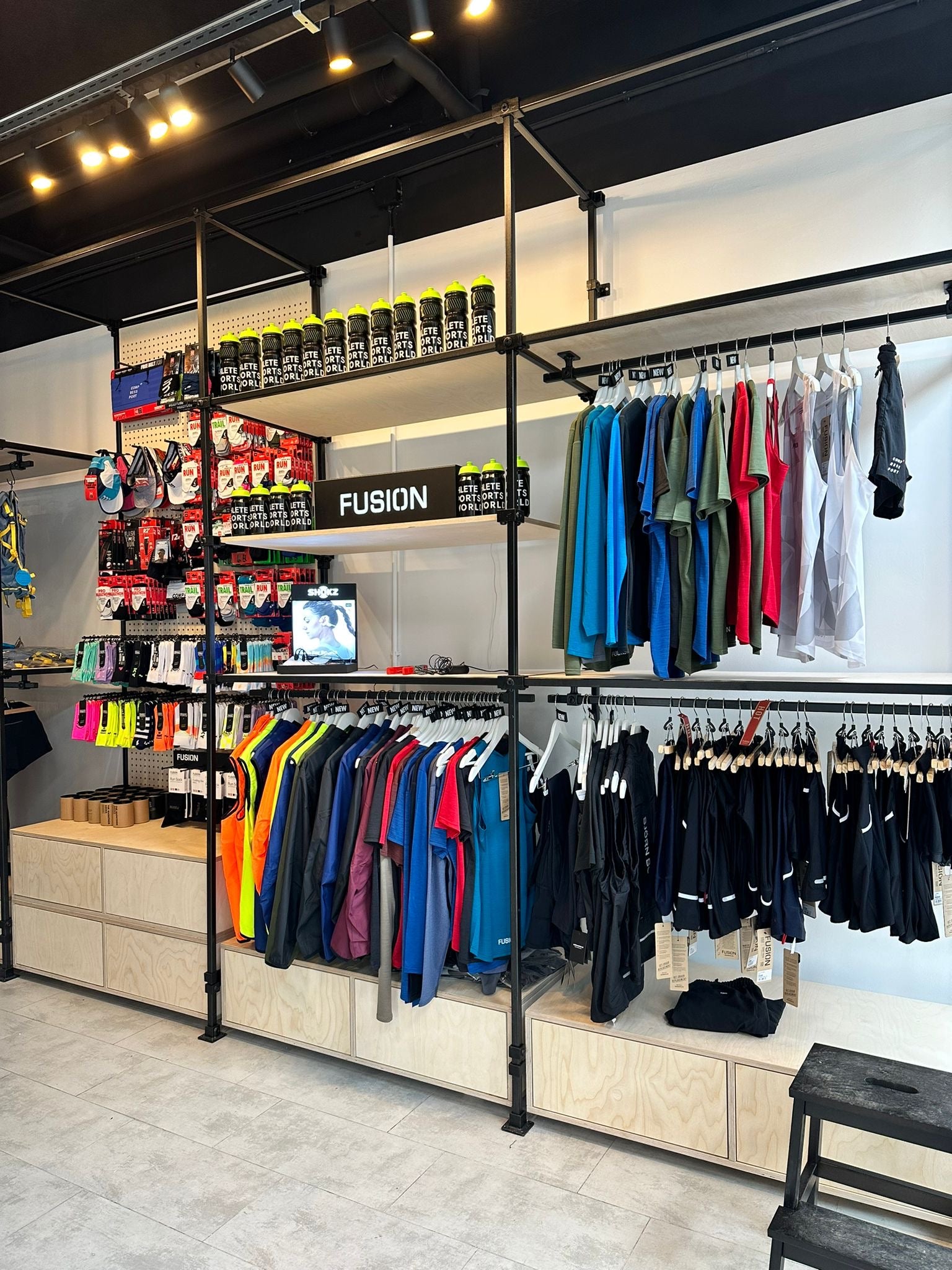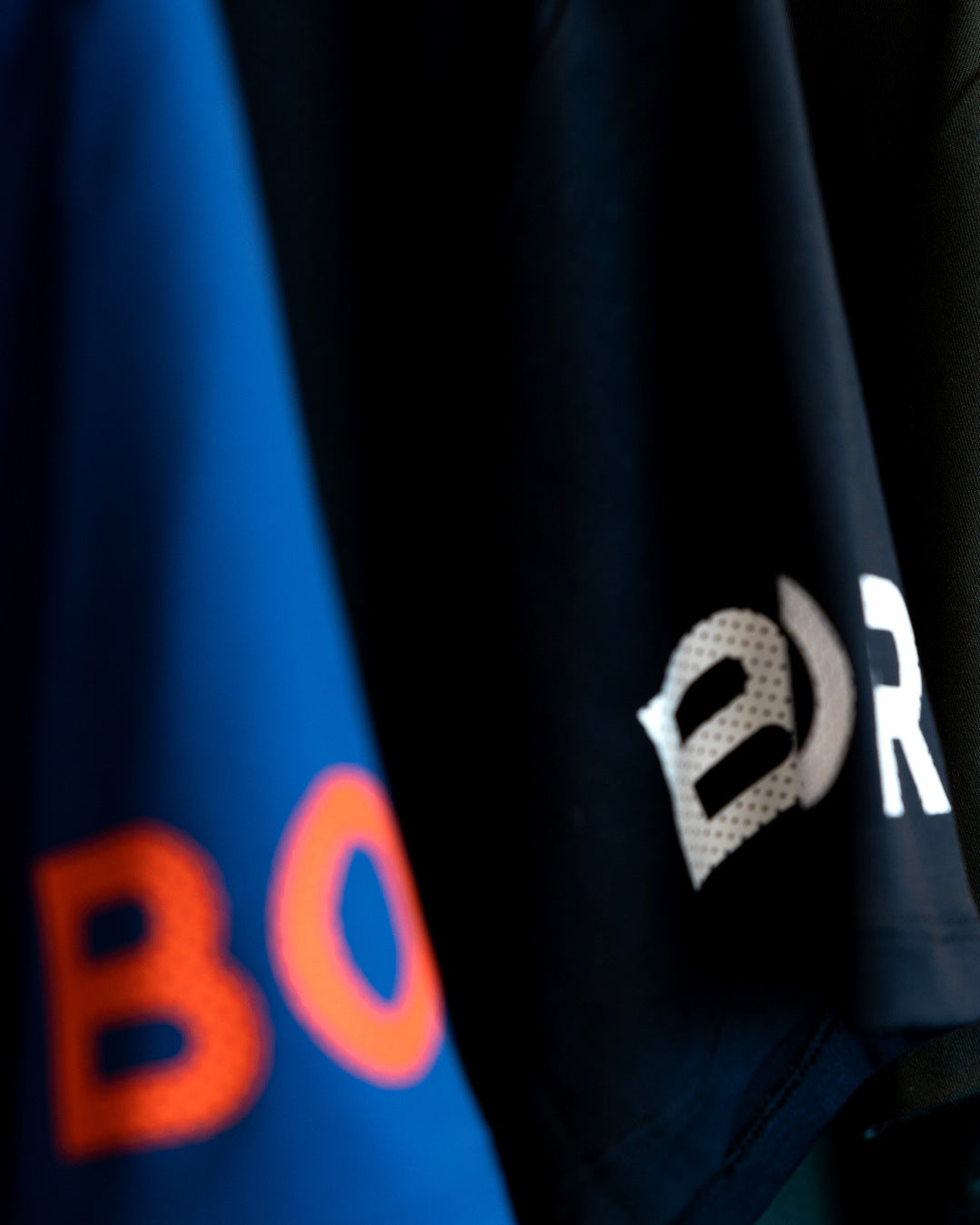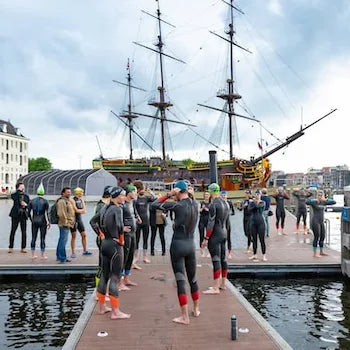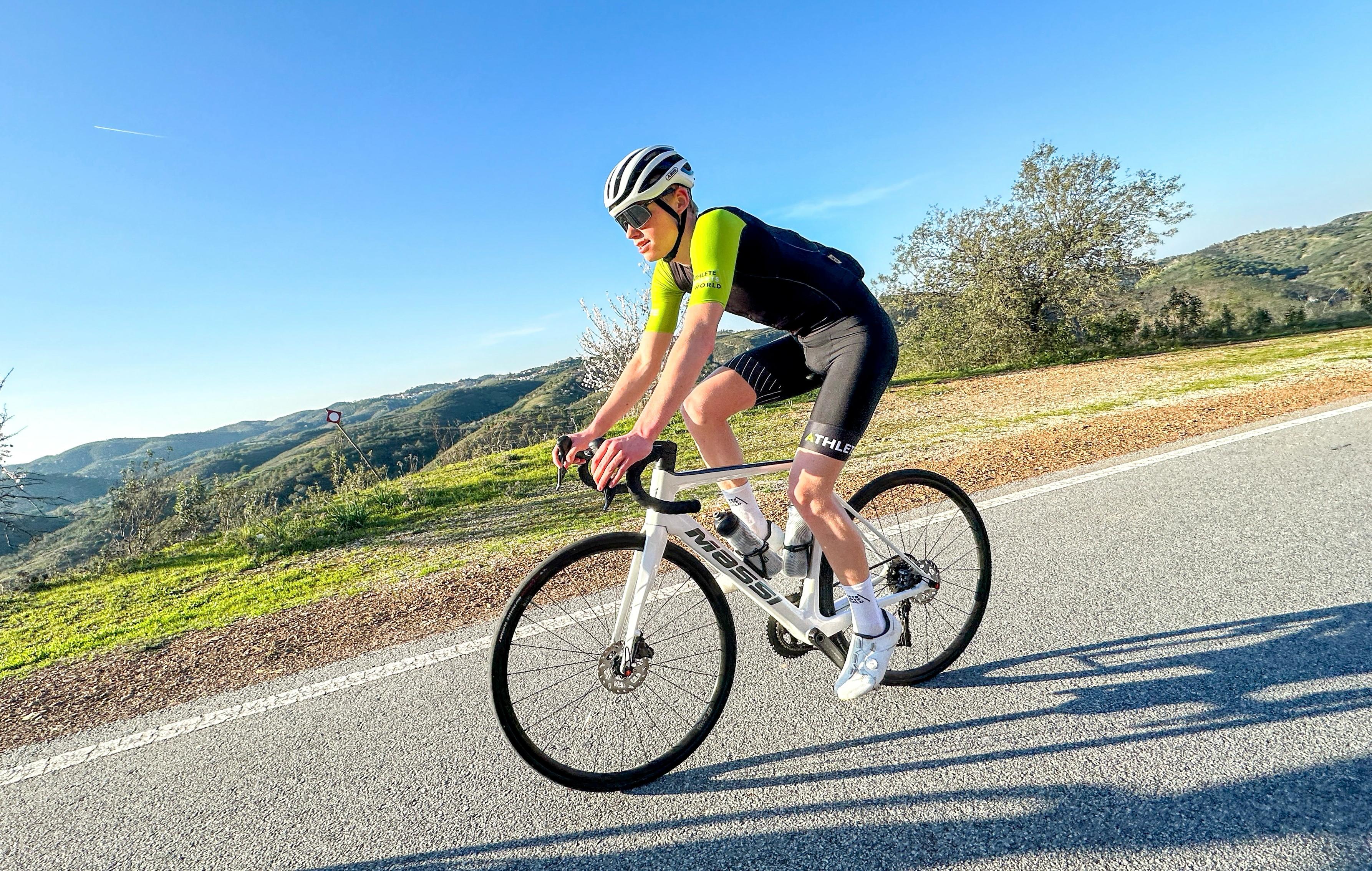During intensive exertion, your body is less able to absorb energy. This is due to two things. First: the blood supply to your stomach and intestines is limited during exercise. This means that it is more difficult to break down and absorb nutrition. The breaking of fat, fiber, protein and complex carbohydrates requires more work from your body than breaking down and absorbing simple carbohydrates. A second difficulty is the distribution of oxygen during intensive exertion. The oxygen that you absorb prefers to go to your muscles in order to be able to swim, cycle and walk as hard as possible. You don't want too much energy to be wasted on the absorption of energy. Again, carbohydrates are preferred. The combustion of carbohydrates requires less oxygen than the burning of protein or fat. A bit of a technical story. But remember this: during intensive exertion, simple carbohydrates are the best fuel.
Sports drink
Sports drink Comes in three varieties: 1) Sports water with only electrolytes and no added carbohydrates (Hypotone drinks). 2) Isotone sports drink 3) Hypertone sports drink. Isotone sports drink is preferred during intensive effort. This is absorbed the fastest by the body. Do not use High Energy Drinks during exercise. The high concentration of carbohydrates in these drinks ensures that moisture must be transported to your stomach to absorb the carbohydrates. Moisture that goes better to your muscles for the supply of nutrients. Do you use electrolyte tablets? Then remember that they do deliver minerals but no carbohydrates and therefore no energy.
When: sports drink is the ideal energy source if you racet or train in warm conditions. It provides your body with both energy and moisture. On the bike, where you have enough space to take water bottles, sports drink is the best source of energy.
How much: During low-intensive effort, 500-750 ml isotone sports drink per hour is sufficient. This gives you 30-45 grams of carbohydrates. During intensive effort and competitions, 750-1000 ml is the guideline.
Energy
Gels You can see as a concentrated form of sports drink that you can easily take with you on the road. Gels are, just like sports drink, or isotone (so you don't have to drink water with it), or hypertone. In the latter case you want to drink extra water with it. On a gel will always be mentioned or how much you have to drink with it. Some gels provide you with extra substances such as sodium, potassium, amino acids or caffeine. Are you taking gels for the first time? Try different types so that you will find a gel that you like in terms of taste and substance.
When: because gels are so compact, they are ideal for running. Make sure you drink enough at the AID stations. A gel with caffeine for swimming in a competition is a good way to give yourself a boost right at the start.
How much: During low intensive effort, 1.5 to 2 gels per hour are sufficient. During intensive effort and competitions you prefer to take 2-3 per hour.
Bars and solid food
energy Bars And solid food is not ideal during intensive exertion such as oxygen and the supply of blood to your stomach and intestines is limited. During quiet endurance runs or endurance rides, it is great to take solid food. For example, think of raisins, bananas, winegums or white bread with jam or honey. Does your ride or endurance run for more than 2 hours? Then add a little bit of protein. This will help you to recover faster.







